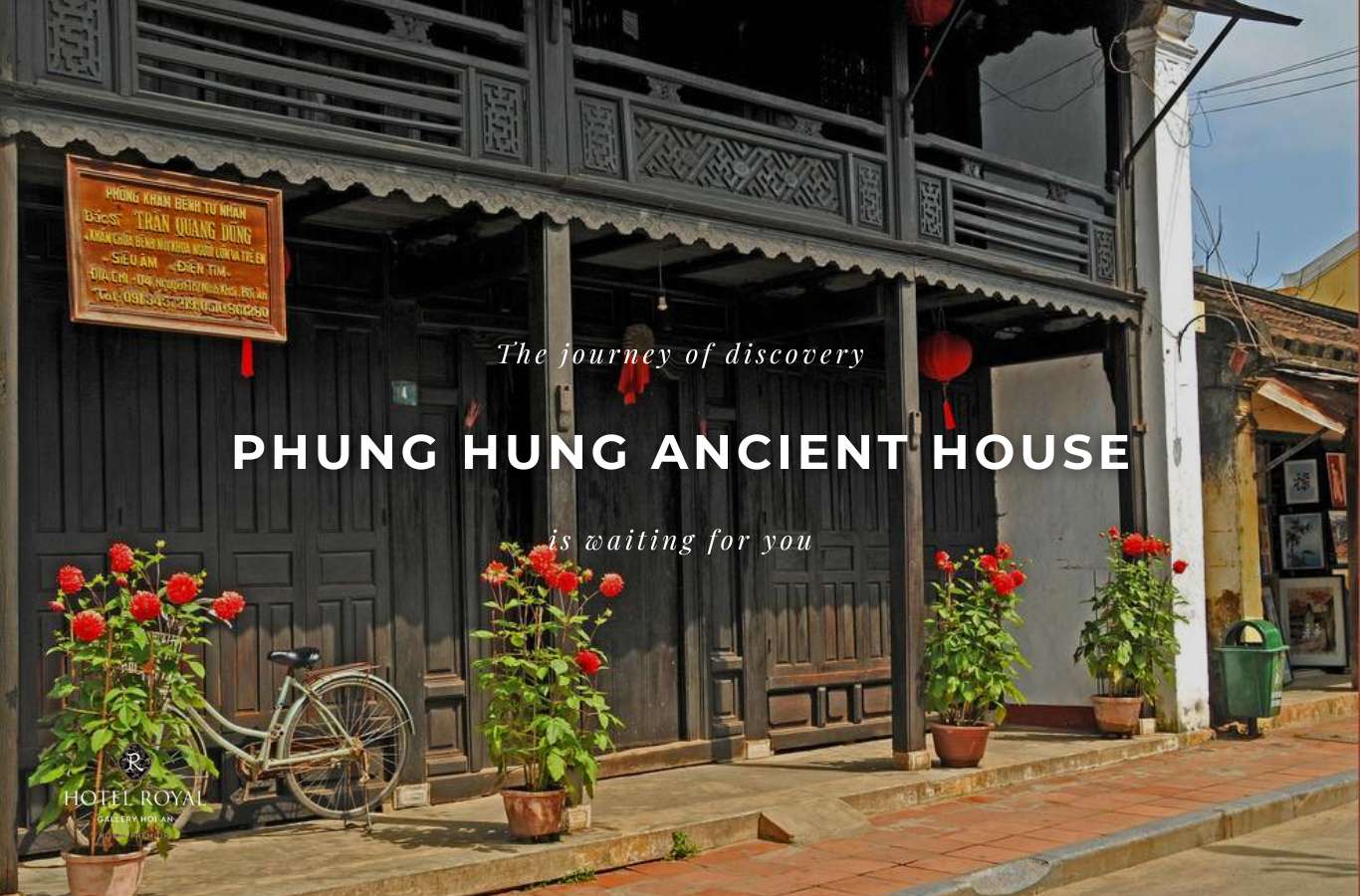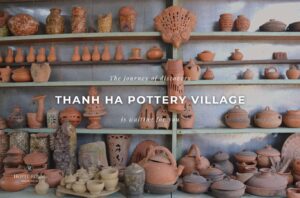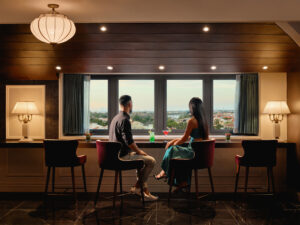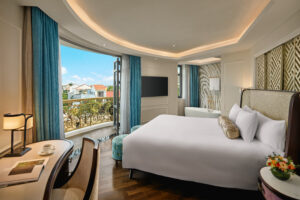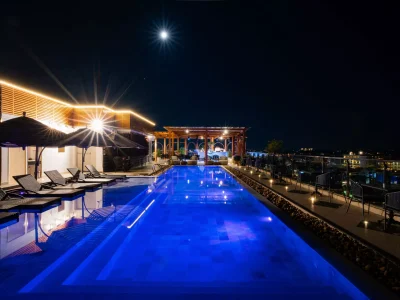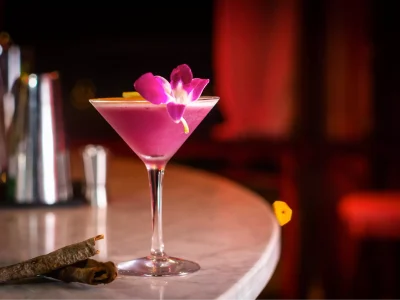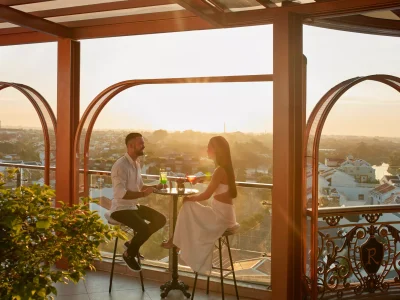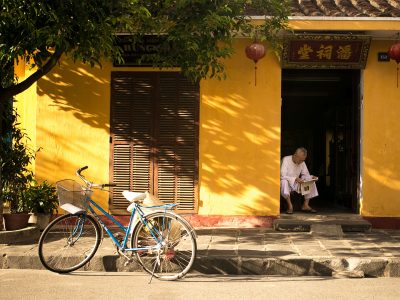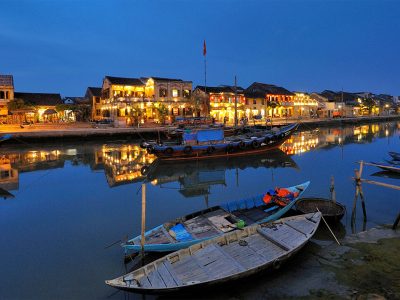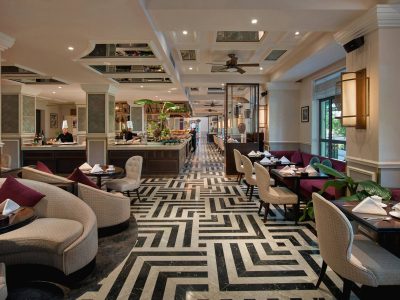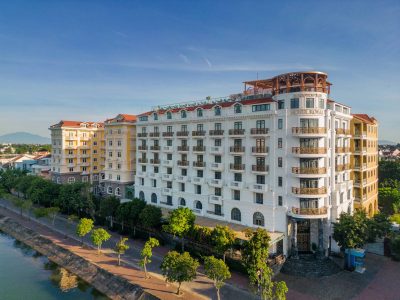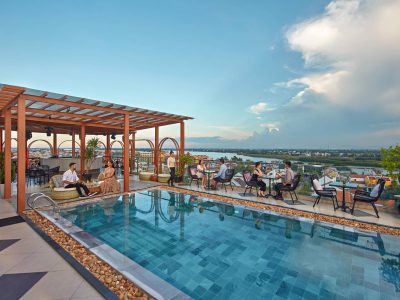Phung Hung Ancient House is one of the oldest architectural symbols in Hoi An Ancient Town, preserving the essence of traditional values through more than 240 years of change and resilience. Join Hotel Royal Hoi An Gallery to explore the charm of this historic architectural masterpiece in the article below!
Table of Contents
ToggleWhere is Phung Hung Ancient House located?
Phung Hung Ancient House is located at No. 4 Nguyen Thi Minh Khai Street, Hoi An Ward, Da Nang Province (formerly Minh An Ward, Hoi An City). This is one of the most prominent ancient houses in Hoi An Ancient Town, just a few steps away from the Japanese Covered Bridge.
The house was built in the late 18th century, showcasing a refined blend of Vietnamese, Chinese, and Japanese architectural styles. With a history of over 200 years, Phung Hung Ancient House is not only an outstanding architectural symbol but also a National Cultural and Historical Site, attracting many visitors during their trips to Hoi An.
- Opening hours: 08:00-18:00
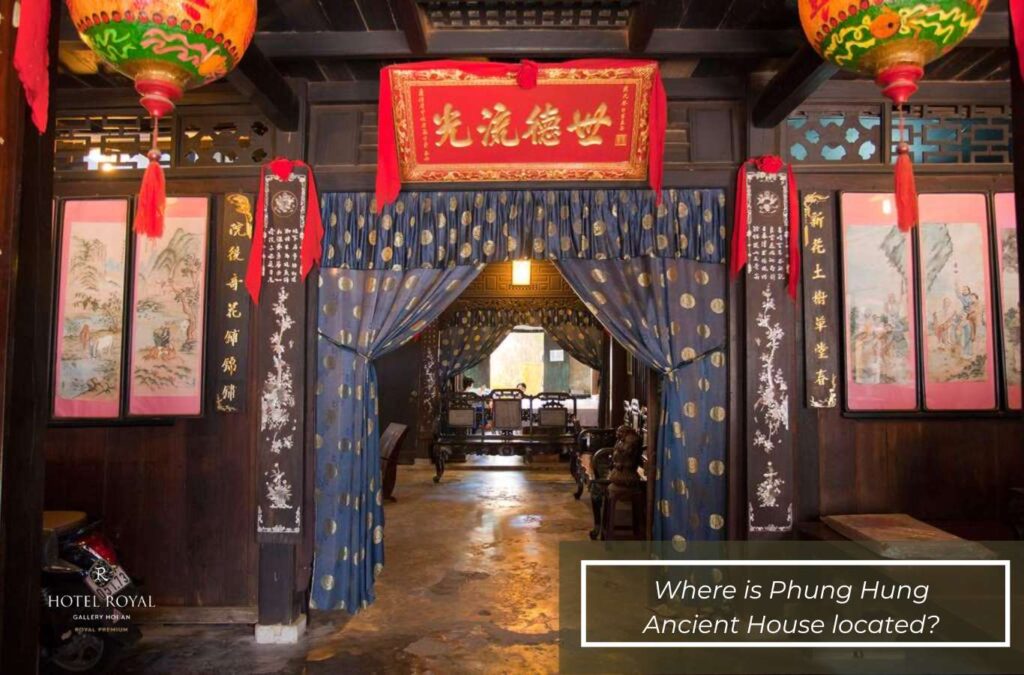
History of Phung Hung Ancient House
Phung Hung Ancient House was built around 1780 and is now over 240 years old. It originally belonged to a Vietnamese merchant who traded cinnamon, pepper, salt, porcelain, and glassware, highly sought-after goods at the time when Hoi An was a bustling international trading port. Wishing for prosperity in his business, he named the house “Phung Hung,” meaning thriving and sustainable development.The house has been preserved and lived in by eight generations of the same family. On June 29, 1993, Phung Hung Ancient House was officially recognized as a National Cultural and Historical Monument.
Besides its historical value, the house is deeply tied to the memories of Hoi An residents during times of natural disasters. During the great flood of 1964, water levels rose to 2.5 meters, and the house provided safe shelter for 160 people for three days and nights. In 1999, Hoi An suffered two major floods, causing serious damage throughout the town. Thanks to a trapdoor system connecting the two floors, the family was able to quickly move goods and furniture to the upper level as floodwaters rose, minimizing losses.
Having endured over two centuries of change and natural disasters, Phung Hung Ancient House remains almost completely intact to this day. It is now a notable cultural attraction in Hoi An, welcoming both domestic and international visitors who come to admire its ancient beauty.
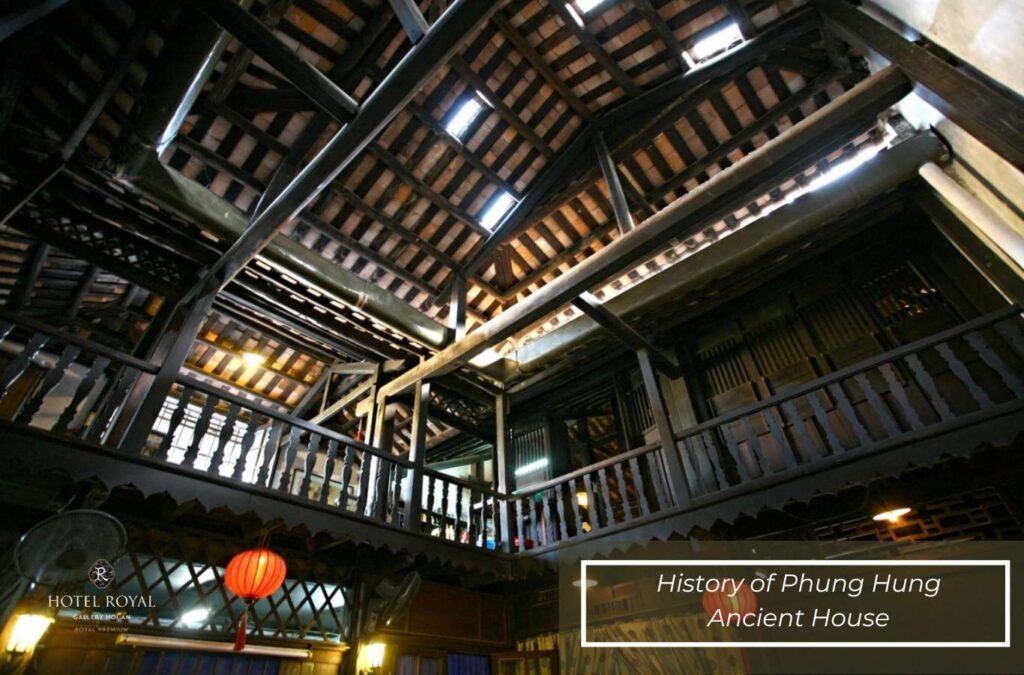
Explore Phung Hung Ancient House
Overall architectural style
Phung Hung Ancient House was built in the traditional tube house style, with a wide facade and extended depth, ideal for merchant families conducting business in old Hoi An.
The house has two floors and is roofed with yin-yang tiles, a type of interlocking tile design that aids drainage and reflects the Eastern philosophy of balance.
Notably, the roof is divided into four sloped sides facing the northwest, allowing for natural ventilation and optimal use of sunlight. The entire house frame is constructed using ironwood and other precious timber, with around eighty large columns set on stone pedestals, which reinforce the structure against termites and harsh weather conditions, preserving it through more than two centuries.

Cultural influences in architectural details
Phung Hung Ancient House harmoniously blends Vietnamese, Chinese, and Japanese architectural influences, evident in its design details and interior layout.
- Chinese influence is clearly seen in the balconies, wooden frames, and intricately carved windows, resembling the residential style of the Fujian Chinese. On the main door, you’ll find two circular mirrors known as “door eyes” or “household guardians” (Mon Than), believed in folklore to ward off evil spirits and protect the home.
- Japanese influence is evident in the central roof section, designed in the “four-seas” style (mái tứ hải), where the roof slopes outward in four directions, a design typical of Edo-period architecture. This not only adds visual interest but also helps with ventilation and natural lighting.
- Vietnamese features appear in the structural framework, including traditional columns, beams, and wooden floors. The upper level contains a sacred worship space and rooms divided in a layout typical of Central Vietnamese homes, emphasizing spirituality, privacy, and warmth.
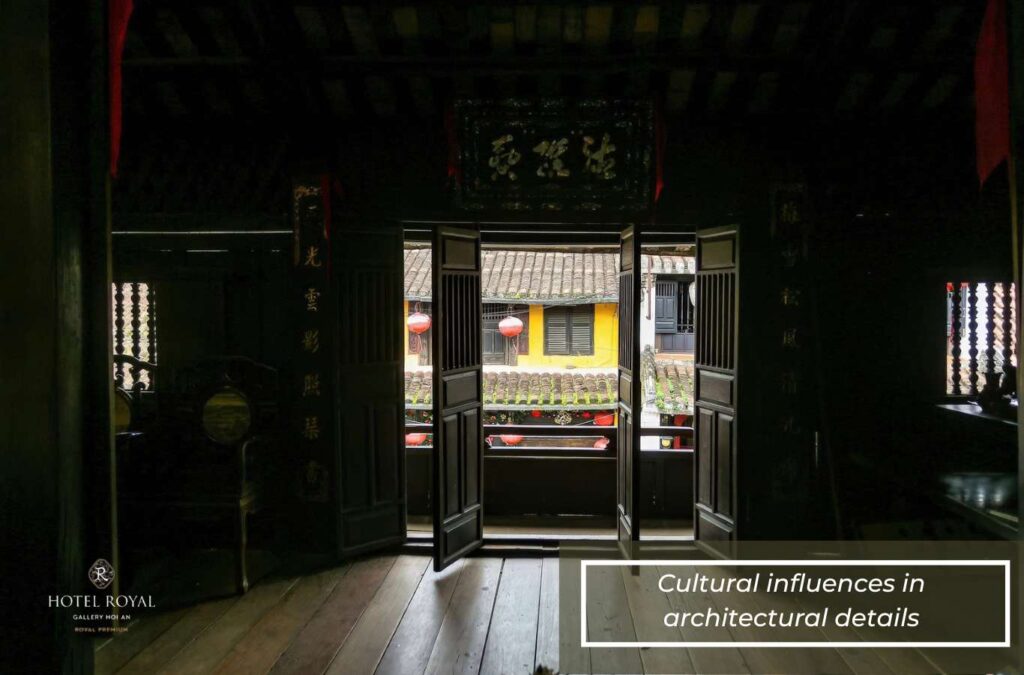
Visiting the interior
The house is open to visitors on two levels, each offering unique characteristics:
- The ground floor is a spacious, open area for welcoming guests and displaying historical artifacts. You’ll see antique wooden furniture, ceramics, and intricate carvings created by artisans from Kim Bong Carpentry Village.
- The second floor houses altars for ancestral worship and for Thien Hau Holy Mother, showcasing the family’s deep spiritual respect. This area is quiet, respectfully arranged, with a wide front balcony for breeze and sunlight. The ceiling is crab-shell shaped, carved with carp motifs, a common symbol in East Asian culture representing prosperity, luck, and success.
Connecting the two levels is a trapdoor designed for transporting goods during floods. Thanks to this feature, the family could quickly move valuables upstairs, minimizing losses during major floods that once struck Hoi An.
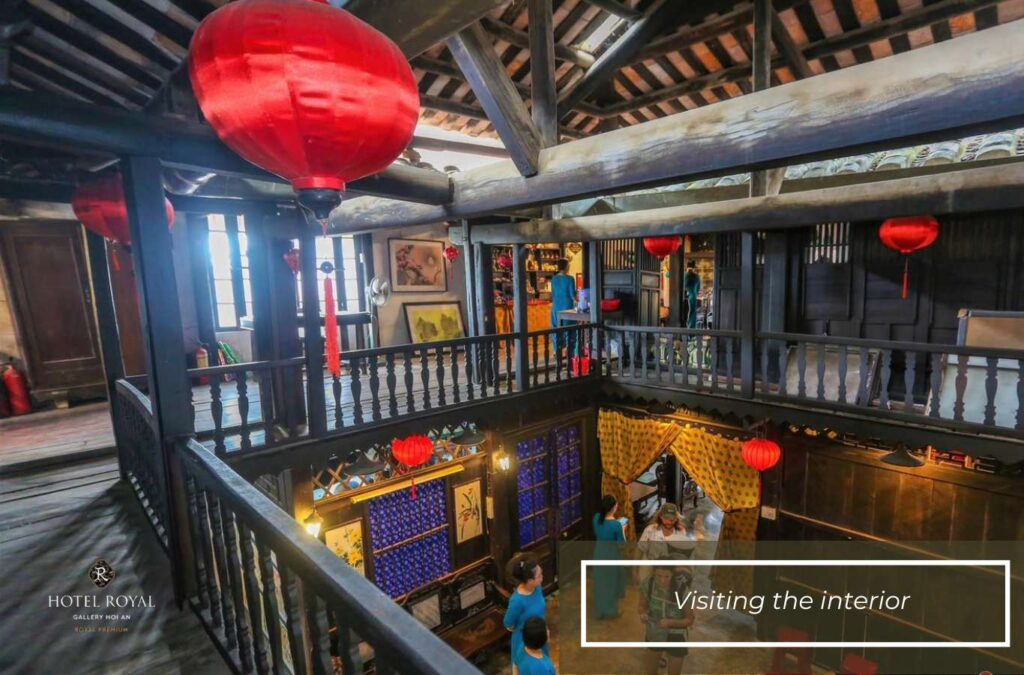
Experience visiting Phung Hung ancient house Hoi An
If you want to explore the beauty of traditional architecture and learn about the life of ancient merchant families in Hoi An, visitors should not miss Phung Hung ancient house. To make the tour more complete, below are some useful experiences when visiting this special place.
Best time to visit
The best time to visit Phung Hung Ancient House is from February to August. Between February and April, the weather is especially pleasant, cool with soft sunlight, making it ideal for admiring the house’s architecture and enjoying a peaceful atmosphere. You should visit in the early morning, between 8:00 and 10:00 AM, when the air is fresh, lighting is gentle, and the crowds are minimal.
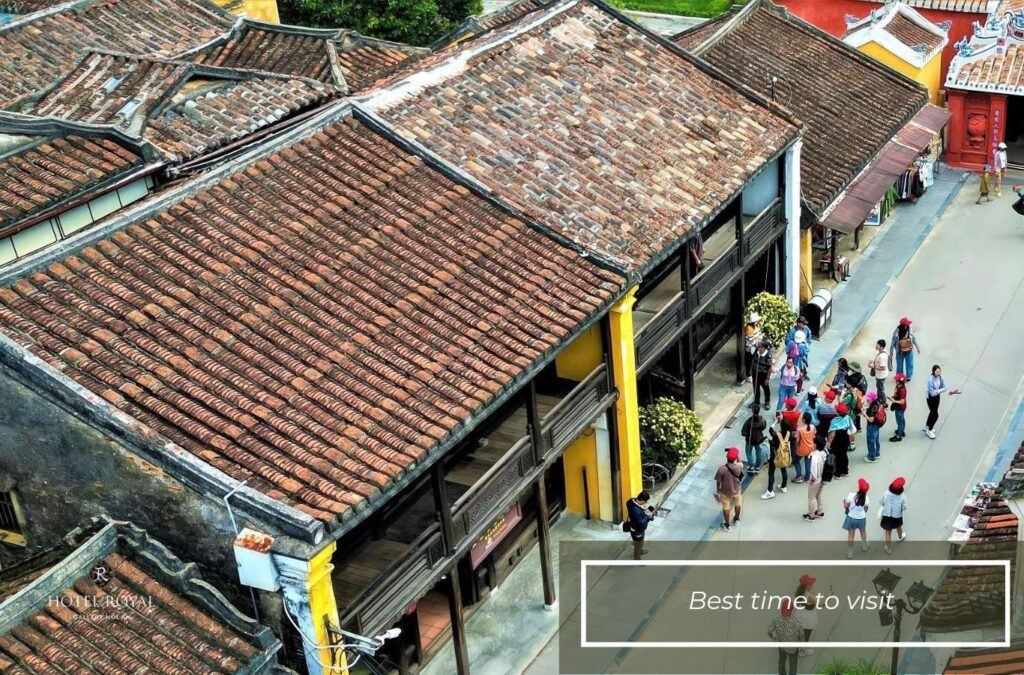
How to get there
Phung Hung Ancient House is a popular destination for many visitors to Hoi An, especially during the peak tourist season. If you’re coming from cities like Hanoi or Ho Chi Minh City, you can fly into Da Nang International Airport and continue to Hoi An by car, taxi, Grab, or motorbike, a journey of just 30–45 minutes.
For a more budget-friendly option, take the Da Nang – Hoi An bus, which takes just over an hour and costs around 30,000 VND per trip. Once you arrive in the Ancient Town center, walk about 50 meters from the Japanese Covered Bridge, and you’ll easily find Phung Hung Ancient House nearby, conveniently located for your tour.
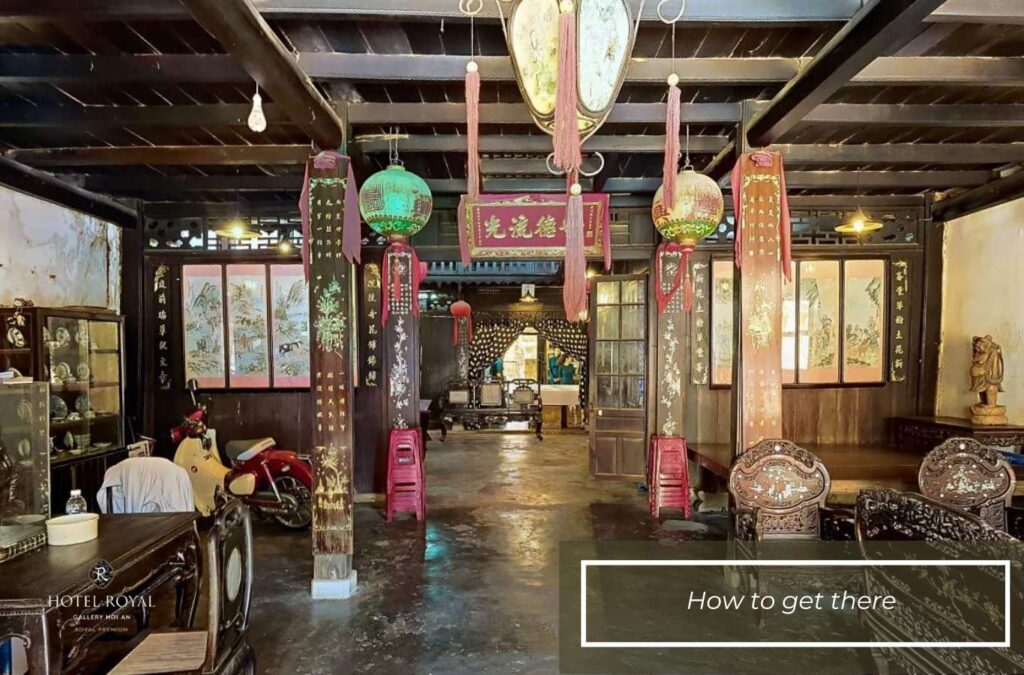
Notes for a better experience
To enjoy a smooth and respectful visit to Phung Hung Ancient House, keep in mind the following tips:
- Dress modestly and respectfully, as the house includes worship areas and remains a private residence.
- Maintain quiet behavior, and avoid loud conversations to respect both other visitors and the residents.
- If you wish to take photos or videos, ask for permission first, especially on the second floor, which is considered a sacred space.
- Do not touch or move artifacts, and refrain from entering restricted areas.
- Be careful when using the wooden staircase, as it’s quite narrow and may be slippery.
- Wear soft-soled shoes to walk quietly and protect the centuries-old wooden floors.
- If you’re visiting as a group, consider requesting an on-site tour guide for stories about the house’s history and architecture.
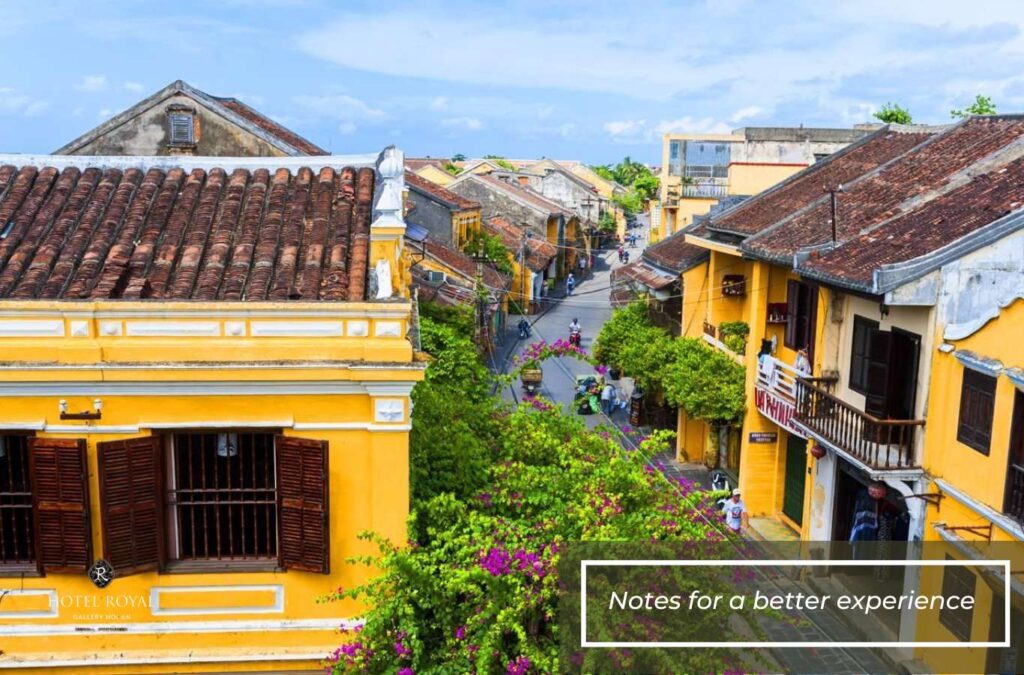
Nearby Attractions
After exploring Phung Hung Ancient House and soaking in the historic ambiance of Hoi An, you may want to visit other nearby landmarks to enrich your experience.
| Destination | Distance from Phung Hung House | Notes |
| Japanese Covered Bridge | 20–30 meters | Right next to the house, symbol of Hoi An |
| Cantonese Assembly Hall | 100 meters | Temple of Guan Gong with impressive architecture |
| Tan Ky Ancient House | 200 meters | One of the most famous ancient houses in Hoi An |
| Museum of Folk Culture | 400–500 meters | Displays traditional crafts and folk culture |
| Fujian Assembly Hall | 800 meters | Large hall with striking Chinese architecture |
Stay at Hotel Royal Hoi An Gallery
Hotel Royal Hoi An Gallery is a highly rated accommodation destination thanks to its prime riverside location along the Thu Bon River, just a few minutes’ walk from Hoi An Ancient Town. The hotel features a total of 187 rooms and suites with refined, elegant design that blends East Asian aesthetics with European modernity.
Each room is fully equipped with premium amenities such as a separate bathtub, spacious work area, in-room safe, and multiple power outlets for easy use of personal devices. This setting is ideal for unwinding after a long day of exploring, especially with two swimming pools, one on the ground floor and a rooftop pool with bar offering spectacular panoramic city views.
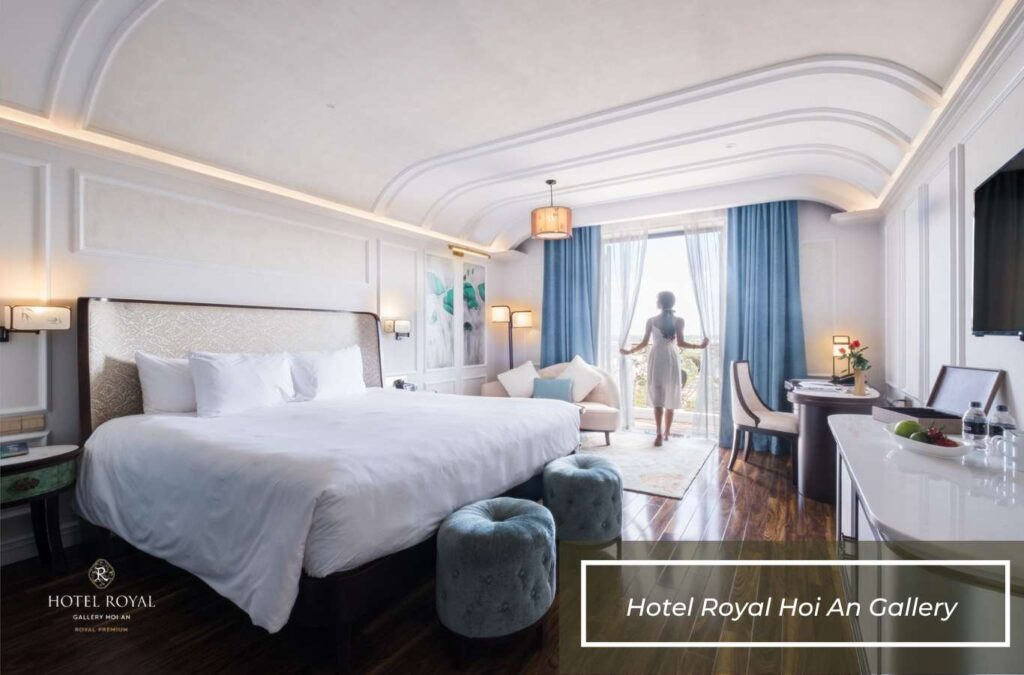
Additionally, the hotel features a modern fitness center, a relaxing spa with steam and sauna rooms, and a diverse breakfast buffet that includes local dishes, international options, fresh fruits, hot pho, and an Executive Lounge for high-tier guests with exclusive services. Guests consistently praise the Hotel Royal Hoi An Gallery team for being friendly, professional, and highly attentive.
We hope this article has given you more insights into Phung Hung Ancient House and helped you appreciate the unique cultural values of Hoi An. If you have the opportunity to visit the ancient town, don’t miss out on this iconic heritage site to better understand the architecture, lifestyle, and generational stories of the local people. Wishing you a fulfilling and memorable journey as you explore Hoi An!

